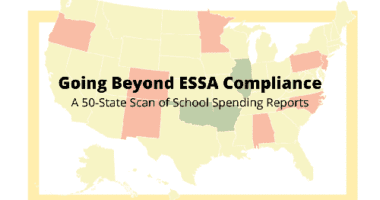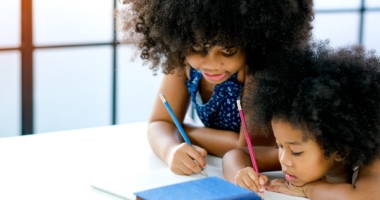Engaging Native Families in Schools Pays Off in Achievement
In the Native American community, the history of education and family engagement in schools has been fraught with pain. Beginning in the 1800s, in an attempt to assimilate Native Americans, federal- and state-created Indian boarding schools often forcibly separated indigenous children from their families, forbade them from speaking their native languages, and made them learn English as well as European ways of life. Parents, and the broader Native community, were physically and emotionally separated from their children’s educational experience.
Not surprisingly, that separation has become evident in student achievement. While performance among Native students has remained nearly flat in recent years, the gaps separating these students from their white peers has actually widened: In 2005, Native students performed above black and Latino students in fourth-grade reading and eighth-grade math, but by 2011, they were on par with other students of color, adding to the ever-growing achievement gap with white students.
Now, schools are trying to reverse the trend, and with it, the severed ties with Native families. The Minnesota Campaign for Achievement Now (MinnCAN), a statewide education advocacy group, documented these efforts — and their successes — in a brief released this month. Working from its Best Schools in 2013 report, MinnCAN identified 28 top-performing schools for Native students, based on student performance and improvement. Underlying much of the success seen in these schools, according to the report, are strong relationships between Native families and their children’s schools.
“The key to the … process, [Danielle] Grant said [director of Indian education for Minneapolis Public Schools], was an understanding that ‘academic success is a shared responsibility’ and that each side — the Native community and the schools — needed to be able to influence the other and, thus, the outcome. ‘Building relationships is vital,’ Grant said, ‘but for a collaboration to last, it must be institutionalized.’”
To see how this works, let’s take a look at Churchill Elementary School in Cloquet, a district two hours north of Minneapolis near the Fond Du Lac reservation, which was lauded in the report. School officials there began reaching out to the Native community in 1997, and both sides formally created joint goals for school attendance, school readiness, student achievement, and parental involvement for Native students. So, in 2005, when parents saw their children’s low academic performance, the agreement helped to empower parents to approach the local school board and demand more academic supports. In response, Churchill Elementary educators began poring over assessment data at the beginning of each school year to determine what level of support each of their 500-plus students will likely need in the first months of the academic year. Based on that information, students are put into like groups for day-to-day personalized academic intervention. And it’s paid off. Since 2010 Churchill students have outperformed the state average in reading and math. And in 2012, for the first time, Indian students at Churchill — and all of the schools affected by that 1997 agreement — made Adequate Yearly Progress under No Child Left Behind.
To be sure, many factors play in to high student achievement, but when parents and communities engage with school leaders and teachers, great things happen.










